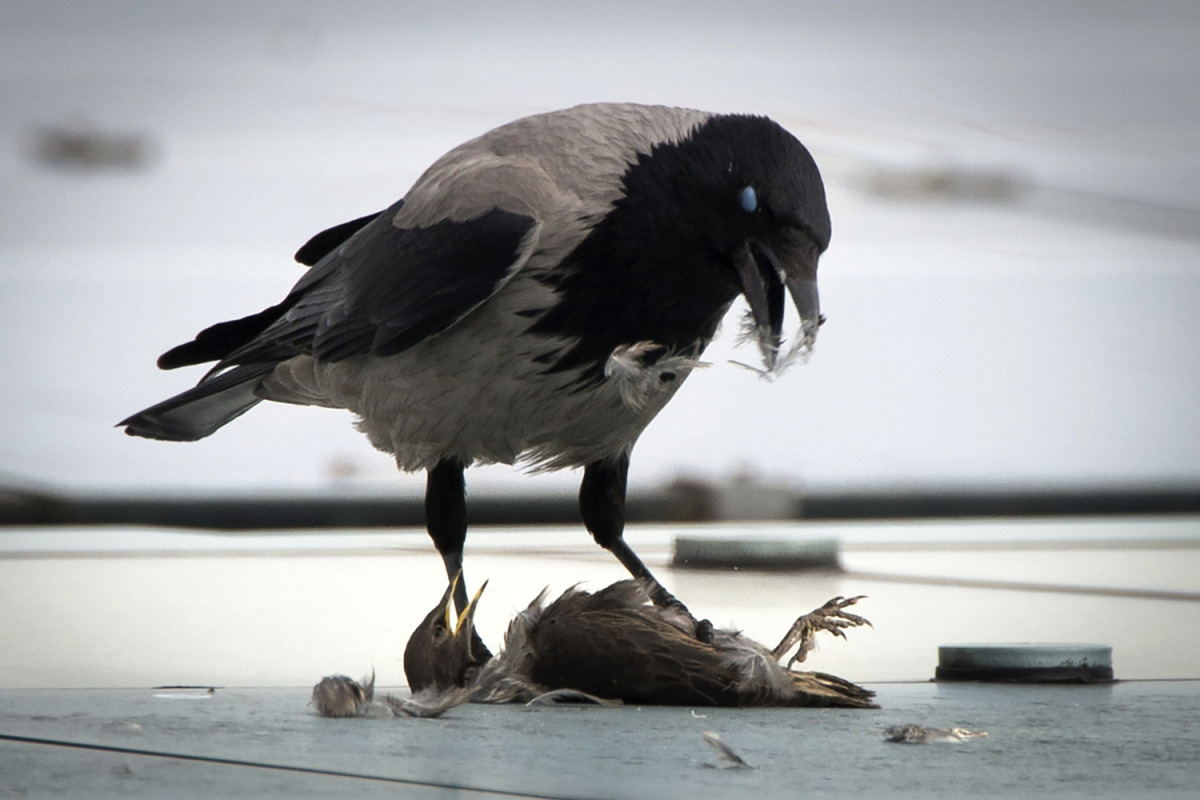One of the standard criticisms of photography is that it produces an idealized conception of reality. Framing, depth of field, and many other techniques are used to feature what is attractive and ignore everything else. Much of the time we see single events, not the surrounding confusion or complexity; clean surfaces, not inner turbulence; smiles, not heartache. Of course photojournalism and art photography alike strive to escape these conventions, whether to document what is going wrong in the world or to explore extraordinary modes of perception. But for every one of those images, there are thousands from commercial photography, advertising, public relations, travel and snapshot photography, pornography, soft news–in fact, just about everything else, including those great pictures of distant galaxies from NASA. And did I mention sunsets?
If I had a dollar for every photograph like this one. . . . . Yet they continue to appear, and not only on Flickr and Facebook. The more conventional they become, the easier it is to disdain them. So, we can point out that this “real” sunset is also a highly idealized portrait of nature. And of a nature that, like the dog waiting for the stick to be thrown, has been thoroughly domesticated. Except that you can’t domesticate the sea and the sky, not least on a planet becoming less hospitable to humanity due to modern resource consumption, so we have only a delusion of control and reciprocal beneficence.
The photo also assumes that the woman (and dog) can easily escape any bad turn in the weather, and that she can take the leisurely stroll because she doesn’t have to depend on actually finding enough to eat along the shore. Her leisure and ours in enjoying the image depend on a prior, taken-for-granted surplus; without it, the photo could only be a weather report or a guide for foraging. Any thought that somewhere, somehow, sustainable food, shelter, and other protections might be at risk is put to rest by the vision of natural harmony. Human, animal, and inanimate nature share a common beauty, what more do you need to know?
I think that is one reading, but not the only legitimate reading of the image. In other posts, I’ve suggested how landscapes and other seemingly superficial images and conventional emotions can provide important resources for living together: for example, by inviting us to a more abundant life than we might think possible. I will say, however, that until recently I was much less likely to see just how idealized many images were. And then I saw this photo:
The caption said, “A crow eats it’s [sic] prey sitting on the roof of the Chancellery in Berlin on May 6, 2014.” That’s a model caption–who, what, where, when–which doesn’t begin to capture what is being shown. On reflection, of course, we are seeing nothing unusual. How do you think all those birds you see stay alive? (They don’t all eat sunflower seeds.) This is nature up close and personal. There may still be a small measure of buffering, as at least in this instance the prey is not being eaten while still alive, but I’d say we are close enough, thank you.
The image is remarkable in its close depiction of predation, but even more remarkable for its rarity. This is a very unusual photograph, yet one that could be taken every day. It presents a very different vision of nature from the sunset. Here survival is front and center, nature consists of killing and being killed, and while there may be pleasure there is no room for remorse.
By focusing without flinching on a single meal by a single bird, the photographer has exposed the pervasive idealization that saturates so much of our mediated experience of the natural world. It would be a small step from there to conclude that the second image is superior to the first: showing us reality as it is, not as we wish it would be; reminding us that we, too, are animals who kill to eat, not pretending that we treat all animals like pets; showing that nature is wholly indifferent to whether any animal lives or dies, not assuming that we fit seamlessly into a natural order of transcendental beauty.
It would be easy to stop there. Let me suggest, however, that doing so would be mistaken. A vigorous realism has to go beyond the claim that life is harsh, and idealization might be one way that we rise above that condition, however precariously. Consider for example, what it would be like if the second photo were the norm: that we saw thousands of images like it every day. (One could say we do but don’t know it, because they involve humans preying on other humans. Let’s leave that for another day.) Imagine that photography’s consistent message was that nature was cruel, that life was only a struggle to survive at others’ expense, that fairness and every other social value had nothing to do with it, and that there was nothing to be seen that suggested any other way of being in the world. Of course, that message is being promulgated from one end of the political spectrum, but fortunately they don’t have photography on their side. (TV and film are another story.) The consequences probably would be gruesome.
So it is that idealization may not be so bad after all. Not all of it, and not without criticism and other reminders of how it can be misleading, but compared to a severe insistence on the struggle for survival, visions of a beautiful, peaceful world might be worth having. Better yet, perhaps they could be inspirations to create such a world in reality.
Photographs by Larry Steagall/Kitsap Sun via the Associated Press and Odd Andersen/AFP-Getty Images.


[…] roof of the Chancellory in Berlin on May 6, 2014. From Harimam and Lucaites, pg. 89. Available at: https://www.nocaptionneeded.com/2014/06/photographic-idealization-delusion-aspiration/. (Accessed […]